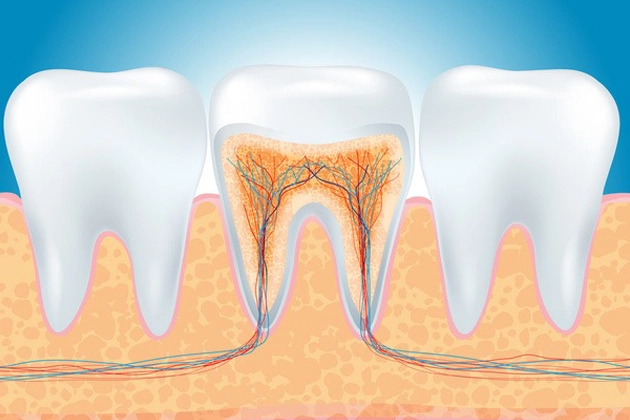
Save Damaged Teeth with Effective Root Canal Treatment
What is a Root Canal?
A root canal is a treatment used to repair and save a tooth that is badly decayed or becomes infected.
They are performed by dentists to remove the damaged pulp from inside the tooth. Once the pulp is removed, the area is cleaned and disinfected, then sealed. They are most often topped off with a dental crown when they are completed.
How Do I Know if I Need a Root Canal?
- Severe tooth pain when chewing or applying pressure
- Prolonged sensitivity to hot and cold temperatures
- Discoloration of the tooth
- Swelling or tenderness in the nearby gums
- A small, pimple-like bump on the gums
What Are the Risks of a Root Canal?
There are risks associated with any medical procedure, but root canal complications are rare. The most common complication is infection, which can occur if the area around the tooth is not kept clean after the procedure.
Other complications include:
- Pain or discomfort
- Swelling
- Tenderness in the gums
- Nerve damage
- Tooth loss
How is This Treatment Performed?
- The first step is to numb the area around the tooth.
- Next, a small access hole is made in the tooth so that the pulp can be removed.
- Once the pulp is removed, the root canal is cleaned and disinfected.
- A temporary material is then used to fill the root canal.
- On your second visit the dentist will remove the temporary material and check to see if the infection is eliminated.
- The dentist will then fill the area inside of your tooth with a permanent material that will seal off the tooth from further infection.
- Your tooth will be topped off with a dental crown in most cases to provide maximum protection for the tooth.
How Long Does the Procedure Take?
Does a Root Canal Kill Your Tooth?
A root canal does not kill your tooth. Root canals are performed to save teeth that have been damaged by decay or injury.
The process involves removing the damaged tissue from inside the tooth, cleaning and disinfecting the area, and then filling it with a protective material. Root canals can be performed on teeth of all kinds, from molars to incisors.
In most cases, the procedure is successful and the tooth can be saved.
Are Root Canals Covered by Insurance?
Most dental insurance plans cover them. However, it is always best to check with your insurance provider to be sure.
Our staff can help you figure this out as well.
Root Canal St. Clair, MO
Our team of dental professionals is experienced in dealing with root canals and we can help you get the treatment you need. We look forward to meeting you, call us and schedule your appointment today!
If you are interested in Root Canal, call our office today to set up a consultation! We would be more than happy to answer any questions that you may have. Contact St. Clair Family Dentistry today and schedule an appointment today!
